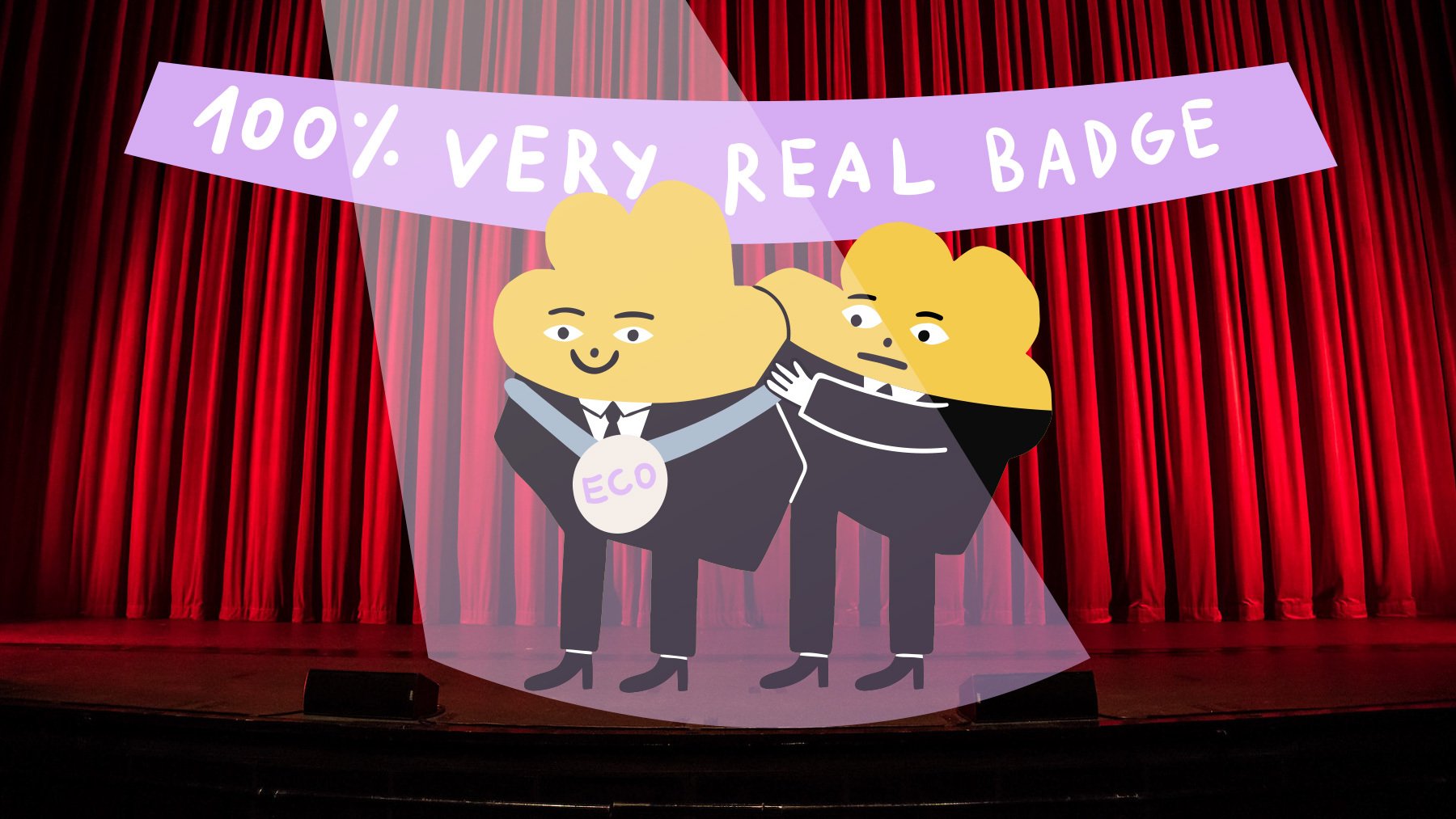Time to end self-styled eco badges
Every product bears a cost on the environment and companies can no longer get by without admitting it. At the same time, consumers are voting with their feet – choosing less harmful products, asking questions about sustainability and demanding a better way forward.
As a result, many companies have created their own eco-badges to communicate a commitment to sustainability.
While such badges are well-intended, they actually do more harm than good.
And we’re not alone in thinking this: the European Parliament recently voted to introduce a ban on sustainability labels that are not based on an official certification scheme or not established by public authorities.
So, what’s wrong with eco-badges?
Most such badges have three BIG problems:
no quantifiable metrics
no external auditing
they mislead consumers
Without quantifiable metrics, you cannot measure the sustainability of anything.
Without external auditing, you cannot trust the claims being made.
And misleading consumers with a made-up sustainability label without reliable proof to back it up simply amounts to greenwashing.
What to use instead of eco-badges
There’s nothing wrong with wanting to show customers you care about sustainability. But if you’re serious about it, you have to face the fact – there are no shortcuts to communicating about sustainability well.
In short, you have two options:
getting official certifications or accreditations (preferred), and/or
mapping out your plan towards becoming sustainable and sharing it publicly.
The standards and expectations are higher for large brands. In fact, we’d go so far as to say that verifiable third-party proof is a must-have for the sustainability communication of big companies.
Smaller brands have way fewer resources to invest, so sustainability communication is a question of priority. We have first-hand experience of how tricky this can be.
When we started writing down our own impact goals in 2020, we saw that sustainability certifications can easily be someone’s full time job. With a team of just five people, we could not afford to have a full-time person for certifications, as we had to prioritise getting the company off the ground: setting up production, finding customers and putting out fires that commonly happen at an early stage company.
So, in the early days, we shared as much as we possibly could about our supply chain on our sustainability page and made our sustainability plans public via an easy-to-follow Notion table – this shows what we’re working on, what’s the progress and when we expect to complete our next goals.
You can find our sustainability reporting Notion table at the bottom of our sustainability page.
Both the sustainability page and the Notion table are still key parts of our sustainability communication. However, as Woola grew, we had more resources and we started working on third-party certificates in late 2022.
As we’ve invested a lot of time and resources into our sustainability communication, we’ve internally agreed on a few key pointers for doing it well.
So, according to our playbook, good sustainability communication:
is factual and data-based,
considers impact throughout the entire supply chain,
covers three overarching areas: people, planet and animals,
includes consistent reporting, and
is supported with third-party proof.
Read more: How to create a sustainability page for your business (with examples)
How to pick sustainability certifications?
If you have the resources to work on getting reliable third-party proof of your sustainability, you’ll quickly realise there are a ton of certifications, benchmarks, frameworks and accreditations out there. And none of them are flawless.
By and large, we can categorise all certifications into two: general sustainable business certifications and domain-specific certifications.
The most popular sustainable business certifications include B Corp, ISO, LEED and Green Business Bureau. The domain-specific certifications relevant to your business will depend on what you do – for paper manufacturers, Forest Stewardship Council (FSC) is one of the best out there; for material compostability, it’s TÜV Austria OK Compost Home; for textile manufacturers the best-known ones are OEKO-TEX, Fair Wear and so on.
Here’s a checklist you can use to help choose sustainability certifications for your business. Look for certifications that:
measure the aspects of your business that have the biggest impact on the environment
are recognisable and relevant to your audience
are managed by a third-party organisation that does not have financial conflicts of interest (think a non-biased, nonprofit, industry association or government agency)
have expert-developed and science-backed standards and guidelines
have a clear and transparent certification process
require third-party audits or a comprehensive external investigation
provide support to certified businesses, including expert guidance during and after the certification process
P.S. This checklist was greatly inspired by Karen Yarussi-King’s suggestions on how to choose which certifications to pursue.
The imperfections of sustainability certifications
Whichever sustainability certification you choose to go for, you’ll find serious criticisms for them – often for very good reasons. In fact, we haven't found any certification out there that is perfect.
Let’s use B Corp as an example here. Companies with a B Corp Certification have to meet high standards in areas such as environmental sustainability, employee benefits, governance, and supply chain practices. It’s widely accepted as the most reputable sustainability certification.
And there’s no shortage of B Corp critics. A quick Google search will reveal a number of criticisms – many even conflicting – but they generally boil down to three things. Some say it’s too general, it doesn’t go far enough, and some say it assists greenwashing.
Despite the criticisms, we recently chose to go down the long and laborious path of becoming B Corp Certified. That’s because we did our research and found it to be the most comprehensive and reliable impact certificate that’s currently available.
The currently available part is key here. In an ideal world, we would have standardised regulation of what constitutes a “sustainable business”, so everyone could work towards that. But this has not happened yet and we do not see it happening any time soon.
Instead of waiting for perfect rule sets, it’s more productive to work with the most reliable rule sets out there, as this beats making sustainability claims without third-party proof any day.




